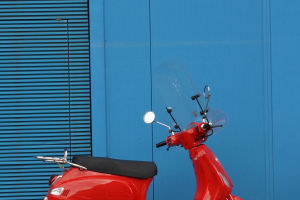Do deserts need only seawater and sunlight to turn into oases? Yes, you heard it right.
But of course, achieving this dream is not as simple as it sounds.
In the desert of the Gulf country of Qatar, scientists are experimenting with seawater and sunlight to create a greenhouse oasis in the desert.
Many see this pilot project as the first step in turning the arid coastal desert into fertile farmland.
As far as the eye can see, the desert area of the industrial city of Mesaieed in the Gulf state of Qatar is almost impossible to make an oasis.
But scientists are trying to turn it into an oasis using only sunlight and seawater.
The experiment started with a cucumber greenhouse.
This greenhouse full of cucumbers is not an ordinary greenhouse. Despite its location in the heart of the desert, it is very cool inside.
It is surrounded by a series of small gardens full of desert plants, separated by fence-like cardboard walls.
It's amazing what they can do.
When walking downwind of the fence, the temperature immediately drops, just like walking into an air-conditioned place.
Next to the garden is a set of mirrors that are designed to gather solar energy from the desert.
Here, the most powerful thing is this small mirror and greenhouse.
They do not need any additional water or electricity supplied from outside at all to keep the plants inside cool and survive with only sunlight and seawater.
Some see this pilot project as a first step in turning hundreds of square kilometers of arid coastal desert into fertile farmland.
Norwegian biologist Joaquin Hauge, who heads the project, has a bigger dream.
He hopes it will be possible to turn deserts into farmland by simply replanting them with plants and doing nothing else.
The centerpiece of this pilot project is the greenhouse.
Around the world, greenhouses are mostly used to grow high-value vegetables and flowers.
However, greenhouses are not so environmentally friendly because they require a constant supply of water as well as heating in the winter.
This greenhouse in the desert is different from a normal greenhouse in that it is designed to keep plants cool and is more environmentally friendly in its use of energy.
Haug said this greenhouse uses the principle of evaporative cooling.
The greenhouse, which often blows northwest, is fronted by a row of honeycomb cardboard walls.
This allows moist and cool air to continuously enter the greenhouse.
Although keeping the greenhouse cool and moist reduces the plants' need for freshwater, they still need a source of water from somewhere to keep them moist.
The solution to this problem is seawater.
The researchers used concentrated solar power systems to provide heat and electricity to remove salt from the seawater, thus meeting the criteria to be able to irrigate the farmland.
Other machines such as pumpers and fans get their power from a 300-square-meter parabolic reflector.
In general, this kind of greenhouse mainly uses seawater and solar energy in offshore desert areas.
On the one hand, it desalinates seawater, using the abundant solar energy in the desert to achieve salt evaporation and reduce the salinity of seawater.
On the other hand, it cools seawater, which produces moist air during evaporation, and introduces the moist air into the cooler.
It condenses into fresh water and ensures that its temperature is suitable for irrigation.
Eventually, the remaining moist air is released from the greenhouse to improve the growing environment of plants in the small garden outside the greenhouse.


